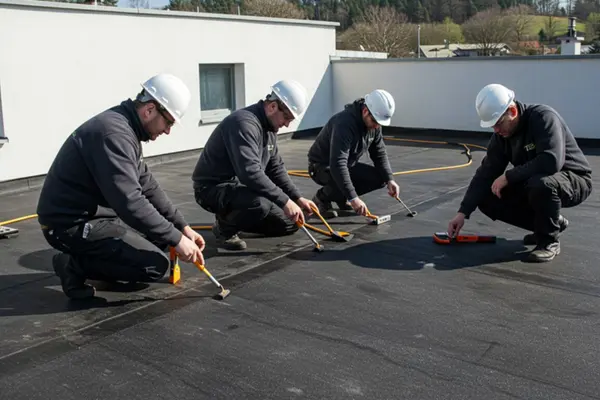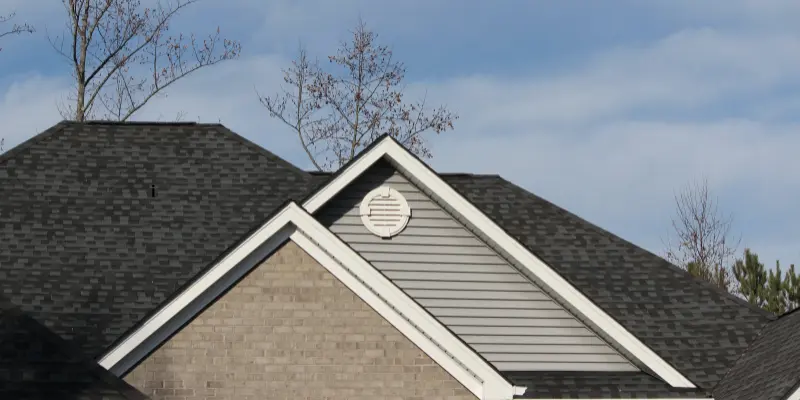How Rubber Roofing Contractors Handle Roof Repairs
Updated: 26 Jun 2025
72
Rubber roofing, most often EPDM (ethylene‐propylene‐diene monomer) or TPO (thermoplastic polyolefin), has earned a reputation for durability, flexibility, and vitality proficiency. Still, even the best films create seams that extricate, flashing that falls flat, or punctures from housetop activity.
When those issues show up, proficient elastic material contractors follow a systematic process that ensures the building envelope, reestablishes watertight integrity, and extends the roof’s life cycle.
Understanding the Nature of Rubber Roof Systems
Rubber roofs differ fundamentally from asphalt shingles or metal panels:

- Single-ply membrane: A wide, continuous sheet usually 45 mil to 90 mil thickadhered or mechanically fastened to insulation.
- Heat-reflective & UV-stable: Carbon black in EPDM and cool-roof coatings on TPO/ PVC slow degradation.
- Low-slope design: Most installations are on pitches ≤ 2:12, where ponding water is a bigger concern than wind uplift.
Because the membrane is both the waterproofing layer and the exterior surface, repairs require specialty adhesives, primers, and seam tapes that chemically bond to the rubber instead of relying on nails or asphalt cements.
Typical Damage Patterns Contractors Look For
| Symptom | Common Root Cause | Why It Matters |
| Seam separation or wrinkles | Thermal movement, improper rolling pressure during installation | Water can wick under the lap, saturating insulation. |
| Shrinkage at parapet walls | Natural “creep” of EPDM over decades | Blisters or air pockets |
| Punctures & cuts | Foot traffic, dropped tools, hail impact | Even a pinhole can channel gallons of water into the roof deck. |
| Blisters or air-pockets | Trapped moisture, bonding adhesive off-ratio | Reduces adhesion and can rupture under foot-load. |
| Clogged drains & ponding | Debris, inadequate slope | Accelerates membrane aging, promotes algae growth. |
Semantically related phrases rubber roof leak, membrane perforation, and edge sealant failure, are all part of a contractor’s diagnostic vocabulary.
Preparing the Surface for Effective Repairs
Proper surface preparation is essential to ensure the success of any rubber roof repair. Contractors begin by cleaning the membrane thoroughly to remove accumulated dust, debris, and oxidation. Using a manufacturer-approved cleaner, they wipe the surface until it is free from contaminants. After cleaning, a primer is applied to both the damaged area and the repair material. This allows for a chemical bond to form between the existing membrane and the new patch or tape, making the repair durable and watertight.
Cost Factors in Rubber Roof Repairs
Repair costs vary depending on several factors:
- Extent of damage – small patches are inexpensive, while large seam failures require more labor.
- Accessibility of roof – tall buildings or complex layouts increase setup and safety costs.
- Type of membrane – EPDM vs. TPO may require different materials and methods.
- Warranty requirements – manufacturer-specific materials may cost more, but protect warranty coverage.
Property owners should request detailed estimates to understand both immediate repair costs and potential long-term savings.
Applying the Correct Repair Method

The actual repair process varies depending on the type of damage. For issues like seam separation, pressure-sensitive crease tape is used to reseal the joints between layer sheets. This tape is rolled into put with critical weight to ensure it shapes a lasting bond. If the problem is a puncture or cut, contractors apply a fix made from EPDM or TPO fabric.
The fix is cut to measure, its corners adjusted for smoother attachment, and bonded using specialized contact adhesive. For more complex repairs, such as those around pipes or rooftop units, pre-molded boots or uncured flashing materials are utilized to conform to irregular shapes and avoid leaks.
Verifying the Quality of Repairs
After completing the repair, Rubber Roofing Contractors perform a series of quality checks to ensure the integrity of the work. They may hand-probe the creases to confirm full attachment or conduct a limited water test to affirm the region is watertight. Any crevices or voids are resealed on the spot. In numerous cases, contractors also take detailed photos of the repair handle for documentation purposes, which may be required by the building owner or the manufacturer to maintain warranty qualification.
Here are some key points for verifying the Quality of Repairs:
- Check the repair closely for any flaws.
- Test the repaired part to see if it works.
- Compare the repair with the original specs.
- Make sure parts fit well and look good.
- Use real, good-quality replacement parts.
- Follow all safety rules during repair.
- Look over all repair papers carefully.
- Run tests to find any hidden problems.
- Ask the customer if they are happy.
- Plan a check-up later to see if it holds up.
Compliance with Safety and Environmental Standards
Rubber roof repair isn’t just about technical accuracy; it also involves strict adherence to safety and environmental regulations. Contractors working on commercial roofs use fall protection equipment and follow OSHA safety guidelines. They are also careful with materials that contain volatile organic compounds (VOCs), ensuring they use low-VOC primers and adhesives when required by local codes. Proper handling of adhesives and tools ensures not only safe working conditions but also environmentally responsible roofing practices.
Eco-Friendly Practices in Rubber Roof Repairs
Sustainability is becoming an important factor in commercial roofing. Many contractors now incorporate eco-friendly repair practices:
- Recycling old EPDM materials where facilities allow
- Using low-VOC adhesives and primers
- Installing reflective coatings to lower energy use
- Extending roof life to delay full replacement and landfill waste
Importance of Manufacturer Compliance and Warranty Protection
Most commercial rubber roofs come with long-term warranties, often ranging from 20 to 30 years. However, these warranties require that all repairs be performed using compatible materials from the original manufacturer and applied according to their guidelines.
Using generic products or deviating from approved repair methods can void the warranty entirely. That’s why experienced rubber roofing contractors maintain certifications with major brands like Carlisle, Firestone, or GAF, ensuring that all repair work is eligible for continued warranty protection.
Choosing a Qualified Rubber Roofing Contractor
Selecting the right contractor is crucial to ensuring that rubber roof repairs are done accurately and in a way that does not harm the building’s structure. A good contractor will not have a long history of encounters with EPDM and TPO systems but will moreover be certified by driving producers.
Carry proper insurance, and be prepared with symptomatic tools like dampness scanners and infrared cameras. They ought to have a demonstrated track record with similar building types and a thorough understanding of the roofing challenges common to your climate region.
FAQs
Q. Can rubber roofs be repaired in cold weather?
Yes, but contractors may need specialized adhesives or warming equipment to ensure strong bonding in low temperatures.
Q. What’s the difference between a patch and a full restoration?
A patch targets localized issues, while a restoration involves cleaning, priming, and applying a protective coating to the entire roof surface for added life.
Q. Is it better to repair or replace a rubber roof?
If the roof is under 15–20 years old and damage is limited, repairs are usually sufficient. Replacement may be better for roofs near the end of their service life.
Conclusion
Rubber roofing systems are among the most efficient and durable options for level roofs, but they require master care when issues emerge. Professional contractors bring a profundity of knowledge and an organized approach that ensures each repair is not as it were effective in the short term but also contributes to the long-term execution of the roofing system. From careful reviews and exact surface planning to master fabric determination and post-repair testing, their work restores peace of intellect for property owners while extending the roof’s useful life.
Dealing with elastic roof repairs is not a simple matter of fixing a gap or replacing a crease. It’s a vital, detail-oriented preparation guided by building science, item chemistry, and safety standards. Trusting this task to a certified rubber roofing contractor MA is the best investment a building owner can make in maintaining the integrity and execution of their roofing system.
Please Write Your Comments